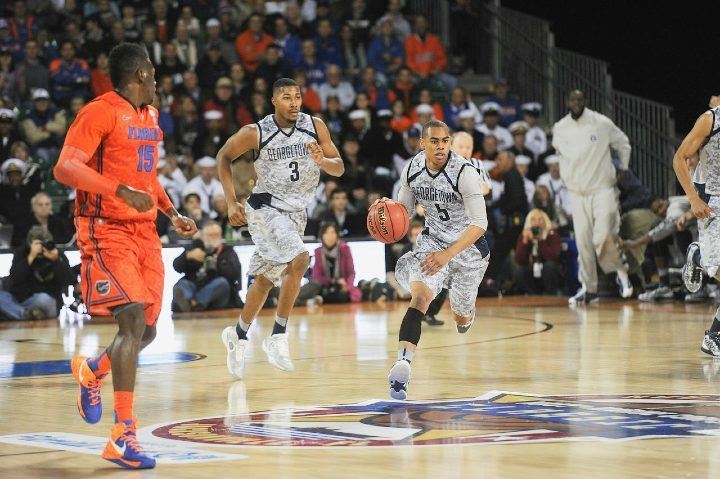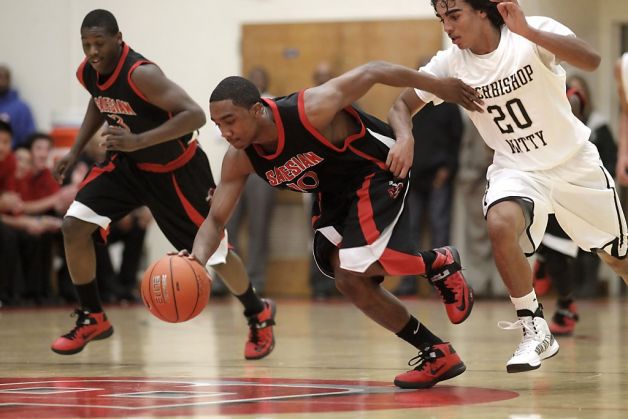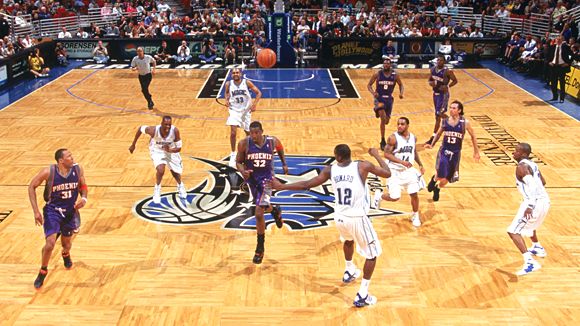Mastering Basketball Defense: Transitioning from Offense to Defense
Introduction
Basketball is a game of constant movement, and one of the most critical moments occurs during the transition from offense to defense. Teams that execute quick, efficient transitions can shut down fast breaks, prevent easy baskets, and can change the pace of the game.
Transition defense isn’t just about hustling back; it requires smart positioning, communication, and disciplined footwork. A single lapse in transition can lead to an open layup for the opposing team, making it a vital skill for all players to master.
Before we dive into specific techniques, check out these 20 defensive drills to build a strong foundation.
Understanding the Importance of Transition Defense
Effective transition defense can make the difference between winning and losing. When teams are slow to recover, they give up fast-break points and open shots. On the other hand, well-drilled teams can force the offense into difficult possessions.
There are three main components of transition defense:
- Immediate Reaction: As soon as the ball changes possession, defenders must sprint back and identify their assignments.
- Protecting the Paint: The first priority is stopping easy baskets near the hoop by placing a defender in the lane.
- Communication: Players must talk to each other to match up quickly and prevent mismatches or open shots.
For more defensive concepts, read how to play defense effectively.

Key Techniques for a Strong Defensive Transition
Transitioning from offense to defense isn’t just about speed—it’s about strategy. Players must balance urgency with control to prevent breakdowns.
1. Sprinting Back with Purpose
The first few seconds after a turnover or missed shot are crucial. Defenders must immediately turn and sprint back instead of watching the ball. This urgency stops fast breaks and forces the offense into a half-court set.
Players should run in lanes, mirroring how they would space the floor on offense. The first defender back should protect the paint, while others find their matchups.
2. Defensive Positioning
Once back on defense, players should establish their position based on their role:
- Rim Protector: The first big man back should anchor the paint and contest shots at the basket.
- Perimeter Defenders: Guards and wings should identify shooters and prevent open three-pointers.
- On-Ball Defender: The closest player to the ball should apply pressure to slow down the offensive attack.
3. Stopping the Ball Early
Great transition teams stop the ball before it gets into the paint. This means forcing the ball handler toward the sidelines and away from easy driving lanes. If the ball is pushed upcourt too quickly, defenses are forced to scramble, leading to breakdowns.
To improve on-ball defense, check out these defensive drills.

Drills to Improve Defensive Transition
1. 3-on-2, 2-on-1 Drill
This classic drill teaches players how to recover quickly and play effective defense even when outnumbered.
Setup: Three offensive players attack two defenders. If the defense forces a miss or gets a stop, they transition into a 2-on-1 fast break the other way.
This drill emphasizes sprinting back, stopping the ball, and protecting the paint.
2. Shell Drill with Transition
The shell drill is a staple of team defense, but adding a transition component makes it even more effective.
Setup: Defenders start in a half-court shell defense, focusing on positioning and movement. Once the offense scores or a turnover occurs, the defense immediately sprints back into transition mode.
This drill reinforces the habit of reacting quickly and setting up a strong defensive wall.
Common Mistakes in Defensive Transition
Even skilled teams make transition defense mistakes that lead to easy baskets. Here are some common errors and how to fix them:
- Ball Watching: Players who stare at the ball instead of sprinting back give the offense an advantage.
- Poor Communication: If defenders don’t talk, they’ll struggle to match up and may leave shooters open.
- Late Rotations: Slow rotations allow easy drives to the basket. Players must anticipate and react quickly.
Conclusion
Transition defense separates good teams from great ones. By mastering weight distribution, sprinting back effectively, and communicating on the court, players can prevent easy points and control the game.
Implementing these techniques in practice will help teams become more disciplined and prepared for high-pressure situations.
For more defensive strategies, check out how to beat a zone defense.
